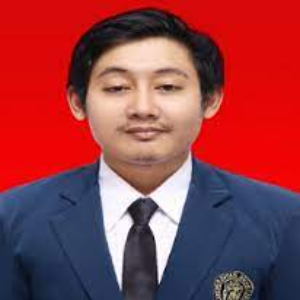Title : Comparison of decellularization results of chicken achilles tendon using triton X-100 and Sodium Dodecyl Sulphate (SDS) media
Abstract:
Tissue engineering is the latest technology in creating artificial tissues ex vivo (outside the body). One of the materials for tissue engineering is scaffolds derived from the decellularization of xenograft tissues from animals, such as chicken tissues. One of the artificial tissues needed is a tendon as a tendon graft tissue. This study aims to perform the decellularization process of chicken Achilles tendons by immersion as a candidate for graft tissue through two types of chemical decellularization materials, namely SDS and Triton X-100, with various concentrations and variations in immersion time. A total of 100 chicken Achilles tendon segments, each 1 cm in length, were divided into two groups: the negative control group (non-decellularized, n=5) and the decellularization treatment group. The decellularization treatment group was divided into two major groups: the decellularization group with SDS and Triton X-100, each of which was divided into three groups based on the concentration, namely 0.1%, 0.5%, and 1%, and each concentration was divided into three groups again based on immersion time variations. Each small group had five tendon segments. The decellularization process was performed by soaking at 37°C. After immersion, samples were placed into 10% NS-formalin and processed into paraffin tissue slide preparations. Cell residue was counted based on HE staining tissue preparations, and collagen thickness was measured based on Mallory staining preparations. Calculations used Image J, and data analysis was performed statistically with Two-Way ANOVA followed by Tukey's Comparison Test with a 95% confidence level using Graph Prism 9.5. This research has received an ethical clearance certificate from Research Ethics of UB, no. 095-KEP-UB-2023. The results showed that immersion in SDS and Triton X-100 with various concentrations could significantly remove cells on various days of immersion. However, the immersion also caused a decrease in the thickness of chicken tendon collagen fibers. The best results showed that immersion in 0.5% Triton X-100 concentration for 21 days was able to reduce the number of cells to no residual cells and maintain the collagen fiber thickness the same as the normal tendon collagen thickness. The conclusion of this study is that the decellularization agent Triton X-100 concentration of 0.5% with a immersion time of 21 days is the best method compared to other group variations for the decellularization process of chicken tendons.
Keywords: decellularization, chicken Achilles tendon, immersion, Triton X-100
Audience Take Away Notes:
- The audience can apply the knowledge gained from this presentation in several practical and theoretical contexts, including academic research, clinical applications, and the development of tissue engineering technologies
- Researchers focusing on tissue engineering, regenerative medicine, or material science can utilize the decellularization techniques discussed as a reference or a starting point for their experimental designs. The comparison between Triton X-100 and SDS provides a basis for selecting appropriate decellularization agents based on their specific research needs
- The research offers practical solutions that could simplify or enhance the efficiency of a designer's job, particularly in the context of biomedical engineering and tissue engineering scaffold design
- The research can significantly improve the accuracy of scaffold designs and provide new information to assist in resolving design problems in tissue engineering



